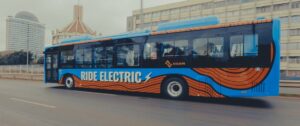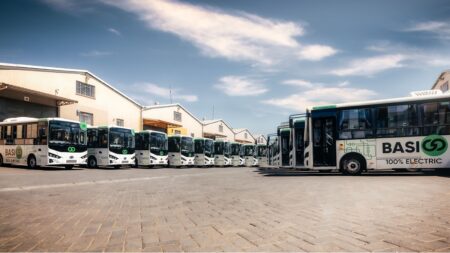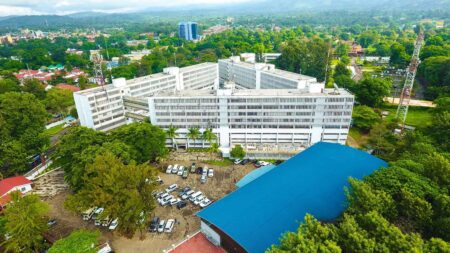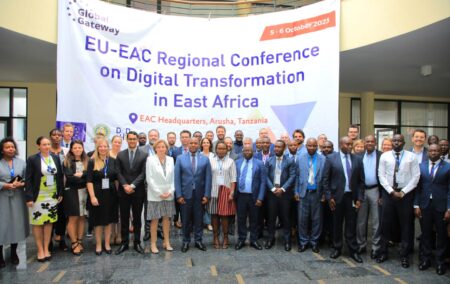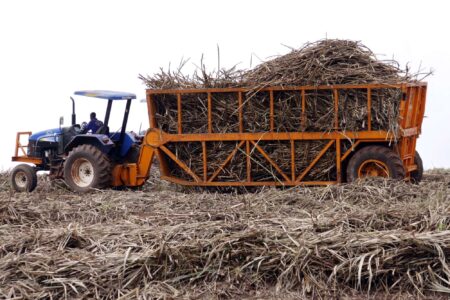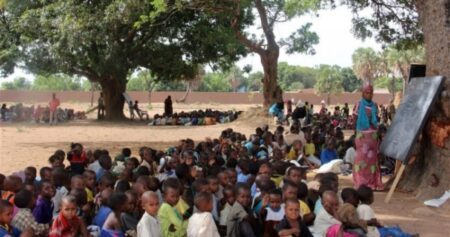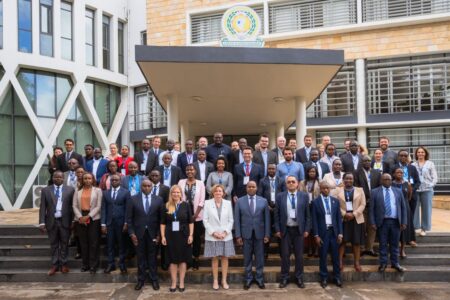- ‘Perfect storm’ in South Sudan demands urgent action – UN
- Kenya’s green gold rush that clean energy investors can’t ignore
- Mining diplomacy: Will the US exploit DRC’s critical minerals?
- Zoned for impact: How a cross-border Special Economic Zone is powering Africa’s green switch
- AIM Congress 2025: UAE’s tolerance conference aims to fix a fractured world
- AfDB’s $10Bn lifeline: Can smallholder farmers finally escape poverty?
- Juba on edge: Is South Sudan the next failed state?
- Kakuzi PLC slips into the red after Red Sea crisis, forex losses
Browsing: EAC
- East Africa’s public transport sector, once synonymous with chaos and pollution, is now leading a quiet green revolution.
- From electric buses in Kenya to CNG-powered fleets in Tanzania, the region is ditching diesel for clean energy.
- Could this unexpected shift be the most defining leap to a sustainable future for urban mobility?
Across the populous cities and towns of East Africa, a quiet revolution is underway. The familiar roar of diesel engines is being replaced by the hum of electric buses, the whir of three-wheeled motorcycles, and the smooth glide of trains powered by clean energy.
Even Compressed Natural Gas (CNG) is fueling fleets of buses and taxis, signaling a seismic shift as the region ditches oil for renewables. But here’s the twist: the unlikely hero of this green mobility transition isn’t high-tech startups, luxury carmakers or even woke government policymakers—it’s the public transport sector.
From Dar es Salaam to …
- Tanzania to import 100MW of electricity from Ethiopia via Kenya.
- Regional power pools enhance power trade and reliability.
- Power trade builds regional integration, diplomacy.
Power trade—the import and export of electricity—is expanding across East Africa, with Tanzania now set to import 100MW of energy from Ethiopia.
The Tanzania Electric Supply Company (TANESCO) will facilitate the import, aiming to reduce power losses and improve electricity distribution in the country’s Northern Zone. The government, in a recent statement, announced that this initiative aligns with Tanzania’s broader strategy to enhance energy efficiency and ensure a stable power supply nationwide.
By integrating into the regional power grid, Tanzania expects to optimize electricity distribution and minimize transmission losses. This move builds on previous power trade agreements with Zambia, Uganda, and Kenya, which have helped bridge energy shortages in border regions such as Rukwa, Kagera, and Tanga.
“This latest initiative aligns with the government’s commitment to …
- Tanzania has entered into an agreement to build a 5000 capacity conference centers in Arusha city.
- New facility named Mount Kilimanjaro International Conference Centre (MKICC) is projected to be operational in 2027.
- The project will cost $144.7 million (TSh385 billion) and features a hotel, helipad, and modern residential suites.
Tanzania is building what is projected to be East Africa’s largest and most modern conference facility, the Mount Kilimanjaro International Conference Centre (MKICC), in Arusha city. The memorandum of understanding for the construction of the MKICC was signed this week between the Arusha International Conference Centre (AICC) and the Public Service Social Security Fund (PSSSF) .
The project sign off was done by the Executive Director of AICC, Christine Mwakatobe, and the Director General of PSSSF, Abdul Razzaq Badru.
“The project is part of the government’s efforts to boost the country’s meetings, incentives, conferences, and exhibitions in its tourism sector,” explains …
- The 8-member bloc will showcase its diverse attractions under the brand “Visit East Africa: Feel the Vibe” during the March 4-6 trade fair in Berlin, Germany.
- EAC aims to attract international tourists and investors by highlighting the region’s rich cultural heritage, natural beauty, and unique attractions.
- The EAC stand at ITB will also provide an opportunity to member countries to showcase their offerings and further penetrate the international market.
Stakeholders in East Africa’s tourism industry have joined forces to make the East African Community (EAC) the word’s next travel and hospitality hotspot during the March 4th-6th, 2025, International Tourism Bourse (ITB) in Berlin, Germany.
In a statement released on Wednesday, the EAC said it will, for the first time, participate in the global expo as a single entity in the world’s largest tourism trade fair.
According to the EAC Secretary General Veronica Nduva, the bloc will showcase its diverse attractions …
- Wärtsilä Corporation, a global leader in energy and marine technologies, has been a key player in Tanzania’s energy sector for over 40 years.
- The Finnish multinational will showcase its innovative strategies for sustainable energy at the East Africa Energy Cooperation Summit in Arusha, Tanzania.
- CEO Thomas Bourlier reaffirms Wärtsilä’s commitment to driving East Africa’s energy growth and regional collaboration.
For over four decades, Wärtsilä Corporation has played a pivotal role in shaping Tanzania’s energy landscape, solidifying its reputation as a global leader in innovative energy solutions.
This Finnish multinational, renowned for its expertise in energy and marine technologies, is set to make its mark at the upcoming East Africa Energy Cooperation Summit in Arusha, Tanzania.
Represented by CEO and Senior Manager Thomas Bourlier, Wärtsilä aims to spotlight its legacy and future-focused strategies for driving sustainable energy development across Africa and beyond. With operations spanning diverse global markets, the company’s participation …
- The trials for the East Africa Electric Highway power supply project are underway.
- This initiative on power sharing is forecast to earn Ethiopia $200 million annually.
- Currently, Ethiopia produces all power for its national grid from renewable sources.
The East Africa Electric Highway project is lighting up a new era of regional integration, with power supply trials now linking Ethiopia, Kenya, and Tanzania. This ambitious initiative, poised to transform energy trade in the region, is expected to generate an impressive US$200 million annually for Ethiopia in its initial phase.
Following the successful completion of an advanced power connection between Ethiopia and Kenya, the project has extended its reach to Tanzania. With the power infrastructure now in place, distribution trials are underway, marking a significant milestone in East Africa’s quest for sustainable energy solutions and economic collaboration.
“This regional power connection is set to enhance cooperation among the involved nations by …
- The World Bank is set to finance a new digital harmonization project across EAC member states.
- Currently, internet prices in the region range from $4.64 in Kenya to $21.06 in South Sudan.
- Integrated connectivity is poised to improve regional trade and boost integration efforts.
EAC internet prices vary greatly among East African countries even though the region boasts of being a single, integrated entity, the East African Community (EAC). The region is, however, taking action to integrate its connectivity, in particular, lowering by seeking to cut present high internet connection fees and improving cyber security as well.
This ambitious goal is set to be achieved through a new World Bank-backed platform, Eastern Africa Regional Digital Integration Project (EARDIP). Funded by the World Bank, the EARDIP is an undertaking under the Intergovernmental Authority on Development (IGAD).
To achieve these two basic goals— lower internet and telecommunication fees and improved security— the …
- This ban is poised to protect domestic farmers and help stabilise the local sugar industry, which has been wobbly due to unchecked imports and poor management of millers.
- Kenya projects local sugar factories could produce over 800,000 metric tonnes in 2024, an uptick from the previous year.
- On average, Kenya consumes about 950,000 metric tonnes of sugar annually.
In a sweet deal fashioned to bolster local sugar producers, Kenya has imposed an immediate freeze on sugar imports from outside regional markets: The Common Market for Eastern and Southern Africa (COMESA) and the East African Community (EAC).
The decision comes at a time when East Africa’s largest economy is projecting a bumper harvest of sugarcane in its sugarbelt across Rift Valley, Nyanza and Western areas. This ban is poised to protect domestic farmers and help stabilize the local sugar industry, which for years has been wobbly due to unchecked imports and …
- Across Africa, there is still very limited access to education.
- Even when accessible, there is a huge discrepancy in the quality of education offered.
- In a forum held in Tanzania, policymakers have urged governments to increase investment in education.
Education in Africa is poorly funded. In one too many countries, poor funding of education systems is an understatement. The African Union, designated this year, 2024, as its ‘Year of Education,’ and as we enter the last quarter of the year, stakeholders are asking, what have we learned about education in Africa?
The pros and cons of Africa’s education system were most recently highlighted at an education conference, held by the East African Community (EAC) member countries in Dar es Salaam, Tanzania, East Africa. Themed “Educate an African Fit for the 21st Century: Collective Action for Quality, Inclusive, and Life-long Learning in East Africa,” the conference sought to assess progress …
- The EAC’s distribution sector is marred by systemic challenges, despite claims of a working free trade zone in the bloc.
- Stakeholders say that persistent bottlenecks hamper the flow of goods and services across the eight-member area.
- A recent EU-led EAC Peer-to-Peer Learning Conference sought to formulate a strategic action plan to address barriers limiting the industry’s growth and development.
The East African Community (EAC) is an eight-country strong regional free trade bloc in East Africa, by definition, it should mean easier movement or distribution of goods and services, but that’s only true on paper, the reality on the ground is quite on the contrary.
EAC maintains that it is “dedicated to enhancing economic efficiency and fostering regional integration through strategic investments and the utilization of established industries. The goal is to position the Community as a single investment area, harmonizing trade policies, investment incentives, and product standards.”
Protocols demand that …

